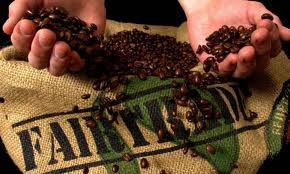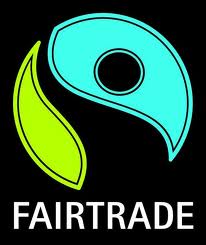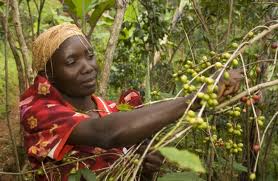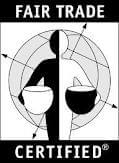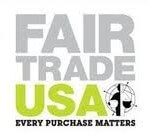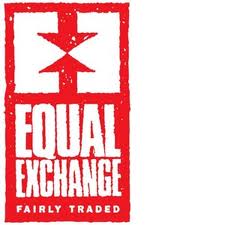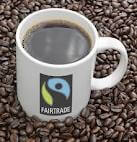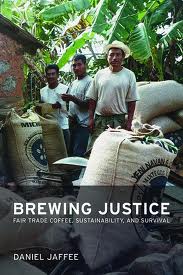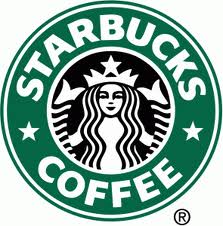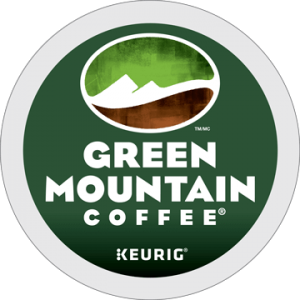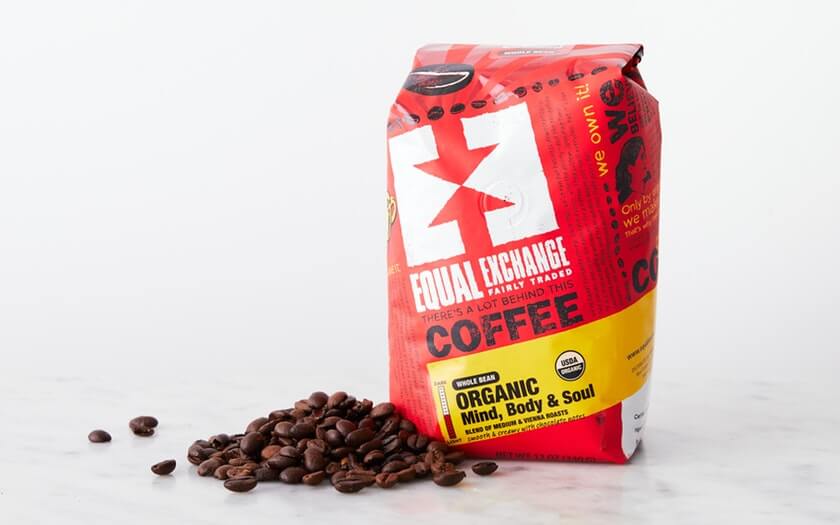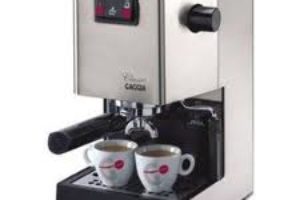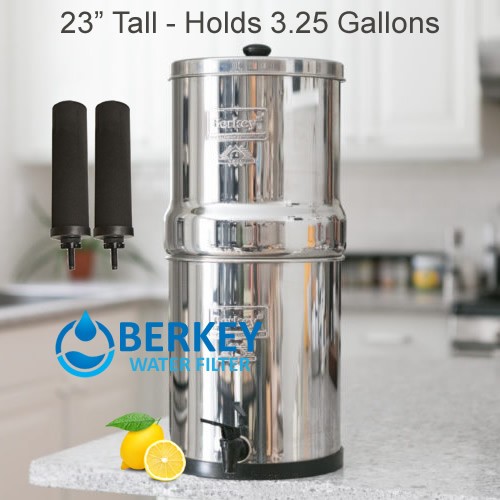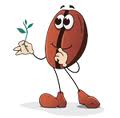Any discussion about Organic Coffee should also mention
Fair Trade Coffee
It seems fitting to address these two separate areas of study as companion pieces.
Though not necessarily tied together, the majority of Fair Trade Coffee is organically grown. Likewise, not all Organic Coffee is Fair Trade Certified, but many of the same methods and criteria overlap.
What is Fair Trade Coffee?
Fair Trade Coffee is an ethical standard of coffee trading, which has gained popularity over the last 25 years, in order to benefit the 25 million small coffee growers who live in 3rd world countries.
By purchasing directly from the growers, at a higher price then standard coffee, workers have an incentive to break free from the cycle of poverty under which they toil and raise their standard of living, while promoting better health and safety conditions.
In order to meet the conditions of Certified Fair Trade Coffee, the farmers are required to join a co-op with other local growers in their region. These co-operatives regulate how fair trade premiums are distributed and the workers are insured a minimum price, plus a premium for trade that exceeds the minimum, based on every pound produced by the small farmers.
A Brief History of Fair Trade Coffee
Long before Fair Trade certification was created, coffee prices were regulated by the International Coffee Organization under which the International Coffee Agreement was negotiated, at the United Nations, in 1962.
A Coffee Study Group was formed to set quotas on coffee importing countries to prevent excess supply and to avoid any drop in overall price.
The ICA continued for 5 years and was renewed in 1968. After a severe frost in Brazil, the world’s leading coffee producer, the agreement was renegotiated in 1976. This was due to a sharp increase in coffee prices.
A series of negotiations ensued over the next decade to establish quotas in order to address supply and demand on the world coffee market and to install stricter import and export regulations.
Quotas continued till 1989, but were suspended when no agreement could be reached. As a result, without quotas, coffee prices dipped to an all time low between 1990 and 1992.
A public forum was established in 1994 with open access to official documents to hopefully decide on future quotas and stabilize the coffee economy.
The agreements of 2001 and 2007 went further toward addressing 3rd world living standards, sustainability, economic education, and promotion of coffee consumption.
Fair Trade Certification
Fair Trade certification had it’s humble beginnings in Brazil, in 1988, due to the flooding of the market and lowering of coffee prices.
Because no price quotas had been agreed upon by the International Coffee Act, supply was greater then demand, and so prices were artificially inflated, to allow fair wages to poor farmers worldwide.
This non-profit organization introduced a labeling certificate to insure fair wages.
Fair Trade can be traced back to 1952, but the certification label was enacted in 1982, though not fully implemented until 1988. If this seems confusing, it is understandable, in light of the endless quagmire of governmental and institutional claptrap that usually surrounds such endeavors. But the affect it has on the lives of so many who struggle throughout the globe is real.
Labels , Labels, and more Labels
In a nutshell, Fair Trade certification and it’s official labeling was conceived, as an idealistic plan to aid common workers, by cutting out the middleman.
In addition, standards were initiated to protect workers rights, address environmental concerns as well as health issues.
However noble this original intent, it has shape shifted, over time, compromising evermore with the corporate multi-headed agri-beast, bent on devouring dreams of equality, giving way to it’s endless pursuit of the bottom dollar. In fact, the entrepreneurial middleman has now been replaced by the beurecratic boogey man.
It’s business as usual. More and more questions arise as to how much benefit trickles down to the small farmer, who ceaselessly labors, on the fringe of society, pulling the heavy load, while we sip our Starbucks coffee, a world apart.
Meet Luis Antonio
Luis Antonio has been a coffee grower for nearly 3 decades. He lives with his family in Quetzaltenango, on the Western highlands of Guatemala.
Three hundred years ago, Jesuit Monks brought coffee to this small Central American country. Since then, poor farmers have labored to increase the productivity of what has become the most lucrative cash crop in the entire world.
For Luis and 25 million other struggling farmers scattered around the planet, Fair Trade was a ray of hope. Long hours and back breaking work have been a harsh reality for these ordinary people. The dream was to have a level playing field by which he and countless others could benefit from an ethical distribution in the marketplace.
So what happened?
According to the Times story: “In a private-industry survey of 2008, around 179 Fair Trade coffee farmers in Central America and Mexico, a copy of which Time obtained, more then half said their families were still going hungry for several months a year.
“When I got the results I was shocked”, says Rick Peyser, director of social advocacy for Green Mountain Coffee Roasters, the Vermont Fair Trade that commissioned the survey. “I was ready to quit”, Massachusetts Fair Trade firm Equal Exchange spokesman Rodney North admits. “There is a potential disconnect between what the buyer thinks Fair Trade is accomplishing and the situation on the ground,” from Latin America to Asia.
The Times article continues to say: “Fair Trade pays $1.55 per pound for Luis Antonio’s organic coffee, almost 10% more then the market price. But Antonio is left with only 50 cents per lb. after paying Fair Trade cooperative fees, government taxes and farming expenses. By year’s end, he says, from the few thousand pounds he grows, he’ll pocket around $1000 — around half the meager minimum wage in Guatalama — or $2.75 a day, not enough for Starbucks’ cheapest Latte.”
For a riveting account of the International Coffee Trade and it’s impact on the 3rd World you must read this book by Daniel Jaffee:
“Brewing Justice”
Pioneers in the Fair Trade Field
In 1986 Equal Exchange was founded as a co-op in West Bridgewater, Massachusetts by 3 idealistic students: Rink Dickinson, Jonathan Rosenthal, and Michael Rozyne.
Their vision was to innovate the food market system by supporting small farmers and furthering principles of honesty and fairness in business practices that can help benefit farmers as well as consumers.
It all began with fairly traded coffee from Nicaragua and has gone on to become a success story.
There is no doubt that many Indigenous people have benefitted from these alternative markets and their standard of living has improved somewhat.
In a Global Market dominated by corporate giants the likes of Monsanto, the achievements of a small alternative movement are something to marvel.
Equal Exchange has also worked the fair trade markets with cocoa, almonds, bananas, and other products.
During the huge gourmet coffee boom of the 1990’s, two U.S. retail coffee companies stood out, one on the East Coast and the other on the West Coast.
Starbucks coffeehouse formed a landmark partnership with TransFair U.S.A. in 2000 to market Fair Trade Certified coffee in over 2000 retail outlets.
This was a big step toward promoting the vision of Fair Trade practices worldwide.
Starbucks, which originated in Seattle, Washington, has grown to become the largest coffeehouse company in the world, with 19,763 stores in 59 countries.
The Fair Trade practices of Starbucks with developing countries has generally been positive though sometimes controversial.
Green Mountain Coffee Roasters (GMCR) was the other coffee company who pioneered Fair Trade partnership back in 2000.
Founded on the opposite side of the U.S. in 1981, Green Mountain began as a small cafe in Waitsfield, Vermont.
The company went public in 1993 (NASDAQ : GMCR)
Green Mountain is a recognized leader in the award winning specialty coffee arena, innovative brewing technology, and environmentally and socially responsible business practices.
The first paragraph of their Statement on Fair Trade:
“Green Mountain Coffee Roasters, inc. (GMRC) has actively supported the Fair Trade movement since 2000, when we first partnershipped with Fair Trade USA, (then Transfair USA) to help bring fair trade to mainstream coffee drinkers. Today, fair trade enables us to continue to provide high-quality coffee to consumers, while helping to improve the quality of life of coffee-growing farmers and their families around the world.”
EDITOR’S NOTE : Since we first posted this article in 2012, Green Mountain Coffee Company merged with Keurig Company, in 2014, and changed their official name to “Keurig Green Mountain, Inc.“
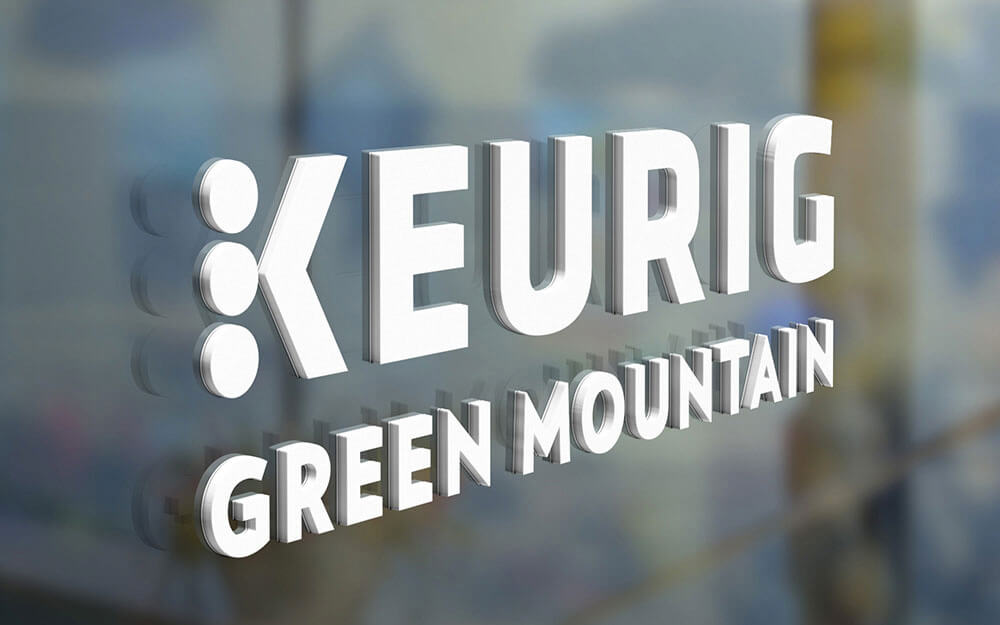
Click Here for more information about Keurig Green Mountain
We have Coffee Related Posters, Tee Shirts, and Coffee Mugs for You to Peruse at the Ample Grounds Shop
AND YOU CAN FIND AMERICA’S #1 VOTED HOME ESPRESSO MACHINE AT THE AMAZON STORE
